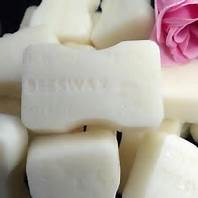Micro Skin Needling













Micro Skin needling - What is skin needling?
Skin needling is also called micro-needling therapy or collagen induction therapy. It is a minimally-invasive non-surgical and nonablative procedure for facial rejuvenation that involves the use of a micro-needling device to create a controlled skin injury.
There are various skin needling devices including Dermaroller® (Dermaroller GmbH); Dermapen™ (Equipmed Pty Ltd; Australia) Derma-Stamps™ (Dermaroller USA) and radial discs incorporating fine microneedles of various diameter and length, fabricated from a wide range of materials such as silicon, glass, metals, and polymers. The needles are up to 3 mm in length but typically 0.5 mm length is used to minimise bleeding and enable rapid recovery.
Professional skin needling is considered to be one of the safest skin treatment procedures. Unlike chemical peels, dermabrasion and laser treatments, skin needling causes minimal damage to the skin.
How does skin needling work?
As each fine needle punctures the skin, it creates a channel or micro-wound. The microchannels created spontaneously close after 10 minutes so that epidermal barrier integrity remains intact.
The needles injure superficial dermal collagen strands and small blood vessels triggering a controlled cascade of inflammation including the release of platelet-derived growth factors transforming growth factor-alpha and beta (TGF β-3), connective tissue activating protein, connective tissue growth factor, and fibroblast growth factor. These lead to the production of new collagen, elastin, and capillaries.
Neovascularisation and neocollagenesis lead to thickened skin and a reduction of scars, with improved skin texture, firmness, and hydration.
What is Micro skin Needling used for?
Skin needling is effectively used for:
- Reducing scars (including hypertrophic scars) caused by acne, surgery, or thermal burns
- Fading stretch marks
- Reducing fine lines and deep wrinkles
- Dyspigmentation and melasma
- Tightening sagging skin.
Microneedle technology also offers a minimally invasive and painless route of transdermal drug administration such as vaccines. This technology is currently being investigated by several research groups and companies. To enhance transdermal drug transport, microneedles can be inserted into the skin to increase its permeability, after which the drug is applied (poke with patch). Drugs could also be coated onto the microneedles and then inserted into the skin (coat and poke).
Hollow microneedles are also used to inject drug solutions into the skin (mesotherapy).
Benefits of skin needling
Skin needling's benefits are listed below.
- It is used to minimise the appearance of scars from acne, surgery, thermal burns, chickenpox, or trauma.
- Skin needling is used for facial rejuvenation and to reduce fine lines and wrinkles, improve skin tone, texture, and pigmentation.
- There is a reduced risk of hyperpigmentation and scarring with skin needling compared to more invasive procedures, and as such, it is safer on ethnic or dark skin.
- It is suitable for thin and sensitive skin.
- The treatment can be performed in an office setting and does not need any extensive special training or expensive instruments.
- The procedure is well tolerated and well accepted by patients.
- It is cost-effective and can be done on areas of skin that are not suitable for peeling or laser resurfacing, such as near eyes.
- As opposed to ablative laser resurfacing, the epidermis remains intact and is not damaged. For this reason, the operation can be safely repeated if needed.
- Treatment does not result in a line of demarcation between treated and untreated skin, as usually occurs with other resurfacing procedures. This allows for specific areas of scarring to be treated without the need to 'blend' or 'feather' at the treatment edges.
- The patient can resume regular activities within a few days, depending on the depth of penetration of the needles. Treatment options like laser resurfacing or dermabrasion are often associated with considerable morbidity and downtime from daily activities of the patient in the post-treatment period.
What is the skin needling procedure like?
The procedure is well tolerated. It takes a few minutes up to an hour to complete, depending on the area to be treated and the severity of the problem.
- No lotions, makeup or other topical products are applied to the treatment area on the day of the procedure.
- The medical professional then applies a numbing cream (topical) on the treatment area or injects a local anaesthetic.
- The skin is punctured in a specific pattern using a skin needling device. The device is rolled over the skin multiple times for best results.
- As each fine needle punctures the skin, it creates a channel or micro-wound stimulating skin cell regeneration.
- Depending on the condition treated it may take 5–60 minutes to complete the procedure.
- A minimum of 6 weeks is recommended between two treatments as it takes that long for new natural collagen to form.
-
Post-procedure care
- Skin needling is well tolerated by patients but dryness, scaling, redness and swelling may be seen after treatment, lasting for several days or longer, depending on the depth of penetration of the needles.
- Sun protection for several weeks is recommended.
- In the case of acne scars, after the skin needling procedure, the face should be cleaned with a gentle cleanser before bed. The next day, the face may be cleansed and makeup, lotions and other topical products applied as usual.
- As the microholes close quickly, postoperative wound infection is rare.
- Emollients or antibiotic creams may be prescribed if considered necessary.
- Rejuvenation of skin may be seen as soon as 2 weeks and as long as 6–8 months after the medical procedure.
- Burn scars are slow to respond. It can take up to 6 months to 1 year to see the final results from a single treatment.
Practical tips
- Good quality instruments should be used; there are many instruments from different companies. Using poor instruments may lead to breakage of needles in the skin.
- The patient should be counselled that multiple sessions may be needed.
- Other treatments such as subcision (a surgical procedure using a needle to cut fibrous bands between fat lobules) and punch elevation may need to be combined for optimal results in acne scarring.
- Application of local anaesthetic cream can prevent procedure pain and help in performing the procedure properly.
-
How many skin needling procedures does one need?
The number of needling procedures depends on the individual skin condition. Three to four treatments may be needed for moderate acne scars. Scars from Thermal burns and stretch marks (striae) may require up to five procedures.
In the case of wrinkles associated with skin ageing, one or two refresher skin needling treatments are recommended every year.
Specially designed home skin needling models with short fine needles (0.2 mm depth) may be used 2–3 times per week to:
- Reduce pore size
- Reduce oil levels in the skin (seborrhoea)
- Help to reduce wrinkles and fine lines
- Enhance the delivery and effectiveness of medical grade skincare creams
- Minimise acne outbreaks.
Are there any side effects from skin needling?
Generally, the treated areas recover rapidly from skin needling. However, there are occasional side effects, which include:
- Oozing and swelling during the recovery phase
- Skin infection with bacteria (rare) or herpes simplex virus (cold sores)
- Milia, which can be easily removed
- Acne flare, which is usually mild.
Author: Anoma Ranaweera B.V. Sc; PhD (Clinical Biochemistry, University of Liverpool, UK), 2012. Updated by Dr Ebtisam Elghblawi, Dermatologist, Tripoli, Libya. DermNet NZ Editor in Chief: A/Prof Amanda Oakley, Dermatologist, Hamilton, New Zealand. October 2018.
Articles-Latest
- Skin tags: Why they develop, and how to remove them
- So That’s Why Your Skin Gets Crepey As You Get Older
- Eye Infection from False Eyelashes
- Teeth stain removal and whitening solutions
- Benefits of collagen for skin
- Why vitamin E should be part of your skincare regime
- Can gray hair be reversed?
- Hair loss affects 1 in 10 women before the menopause – here’s how to treat it
- Conscious ageing and Black skin: What happens when Black does crack?
- Your skin color may affect how well a medication works for you — but the research is way behind
- The C word Cancer
- Astringents
- How does light therapy work? The science behind the popular skincare treatment
- The Most Offensive Fashion Police Criticisms of All Time
- Everything you need to know about lip filler migration, as told by the experts
- Pig semen and menstrual blood – how our ancestors perfected the art of seduction
- Everything you need to know about benzoyl peroxide
- We've bleached, relaxed, and damaged our hair to make ourselves look more white
- Will this be the year that facial filler is cancelled?
- Shock of the old: 10 painful and poisonous beauty treatments
Cosmetic ingredients
LOGIN
Who's On Line
We have 47 guests and no members online
Articles-Most Read
- Home
- White Bees Wax
- Leucidal
- Cosmetic Preservatives A-Z
- Caprylyl Glycol
- Cosmetics Unmasked - How Safe Are Colorants?
- Cosmetics Unmasked - Choosing Ingredients
- Cosmetics Unmasked - Colorants And Fragrances
- EcoSilk
- Toxic Beauty - Who's Looking At Cosmetics?
- Cosmetics Unmasked - Fragrances
- Microbes and Cosmetics
- Chemicals Lingering In The Environment
- Microbes and Safety Standards
- Yellow Bees Wax
- Potassium Sorbate
- Toxic Beauty - Hazardous To Your Health
- Synthetics In Cosmetics - The Industry Fights Back
- Fresh Goat's Milk Soap
- What's Happening in the USA - Cosmetic Regulations - Toxic Beauty
- Active Ingredients
- Cosmetics Unmasked - Listing Cosmetics
- Toxic Beauty - Cocktails and Low Doses
- Natural Waxes A-Z
- Natural Butters A-Z



